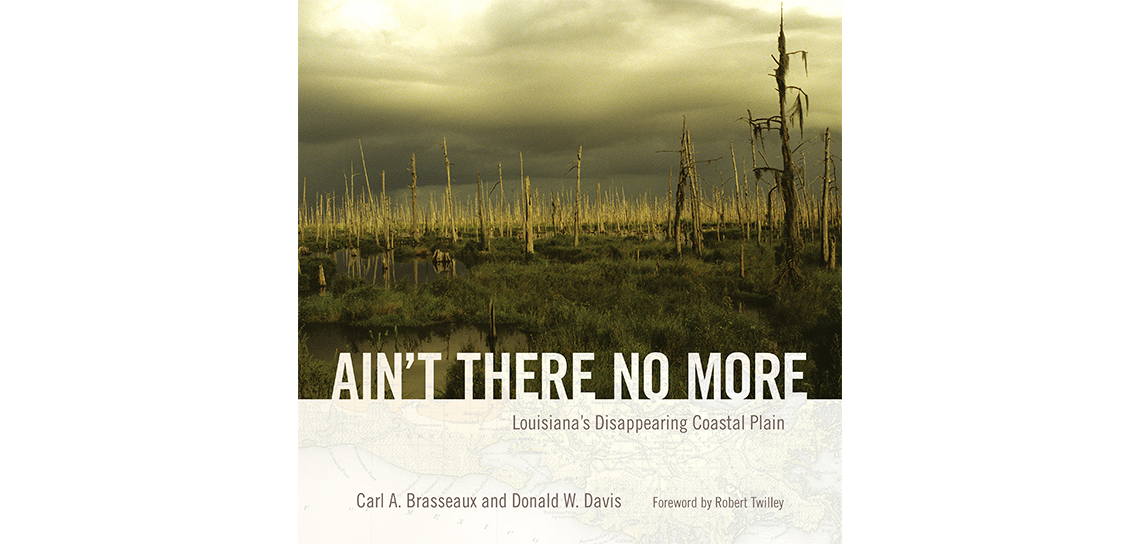Off the page: ‘Ain’t There No More’
The riverside residents of inland Louisiana, like the families of Baton Rouge, may already be familiar with tales of woe from the true Gulf Coast—of soil and habitat lost to natural disasters and the beating of waves, of manmade mistakes via diverted wetlands, and of industrialization weakening traditional industry through pollution and job loss. On paper, the economic and historical review of bayou country has not—especially since the devastation of Hurricane Katrina—maintained a foolproof reputation, despite its cultural fame and intrigue on a national scale. But the truth, according to a new book by Carl A. Brasseaux, former director of the Center for Louisiana Studies, and coastal researcher Donald W. Davis, often comes with many more complications, as well as a deeper look at the people that are too often cut from a narrative full of sleuthing alligators and fathomless swamps.
The authors of Ain’t There No More: Louisiana’s Disappearing Coastal Plain, both Louisiana Sea Grant Scholars, wrote this book—a coffee-table tome filled with rare historical photographs and data from the Mississippi Delta region—as part of the “Third Coast series.” The series’ goal? To create a collection of beautifully illustrated texts dedicated to informing the public about the history of Louisiana’s human settlement and river management systems, so that the people may better influence government policies and the change necessary to preserve their state’s valuable culture and ecosystem.
Beginning about 7,500 years ago, as alluvial material building up from the Mississippi River created the Deltaic Plain, Brasseaux and Davis follow the development of Louisiana wetlands into the 1700s and beyond, including the French government ignoring warnings about the flood-frequent site of their newest settlement—New Orleans—to the 1927 flood that devastated the South and resulted in the highly controversial levee-only policy. But the authors don’t linger solely on environmental mishaps, adding to their pages a vivid history of the region’s anthropological impact, from the harrows of slave labor to the transformative introduction of steam-powered agriculture. Bursting with photographs and full-page illustrations from the past few hundred years, Ain’t There No More contains not just the data surrounding the reality of coastal erosion, but the continuously evolving population who will strive to protect the land of their forefathers. Regardless of who bears the blame for any environmental fractures in antiquated or modern times, the world of Brasseaux and Davis is still a beautiful one, more worthy than ever of care and preservation.












